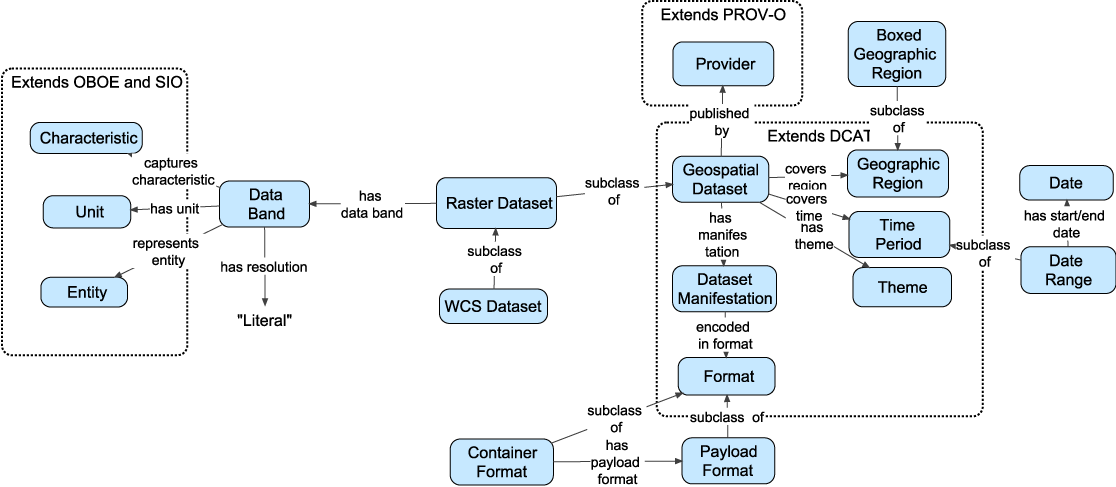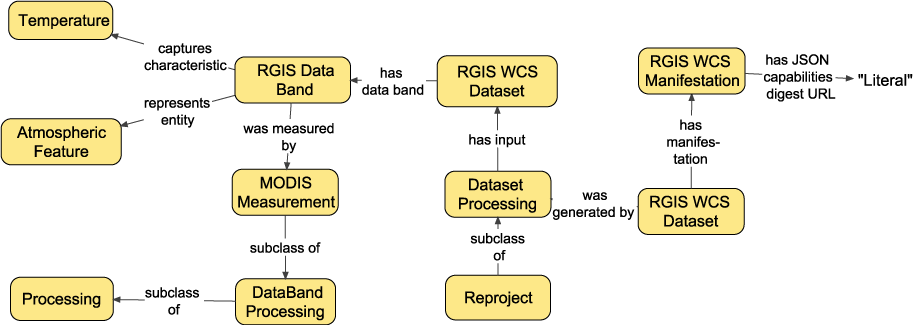ELSEWeb Data and ELSEWeb EDAC
The elseweb-data ontology (blue nodes) provides concepts for describing characteristics of a dataset in a biodiversity scenario: spatial/temporal dimensions, how it can be accessed and entities described. The elseweb-edac ontology (yellow nodes), extends and instantiates the elseweb-data ontology to describe data sets published by EDAC. Dashed boxes outline concepts of the ontology that extend existing ontologies and vocabularies.





